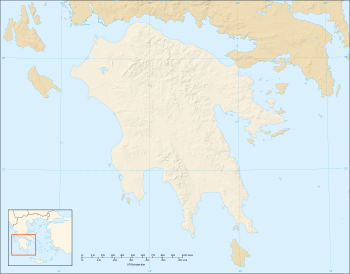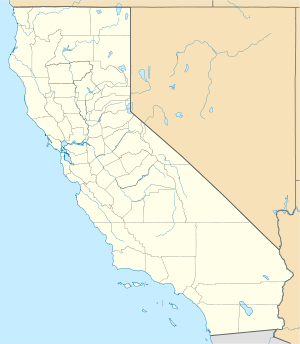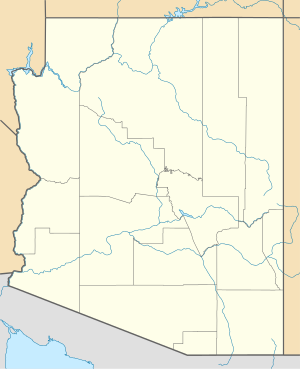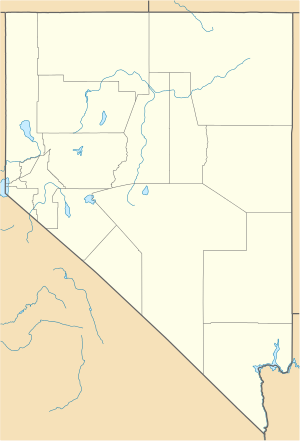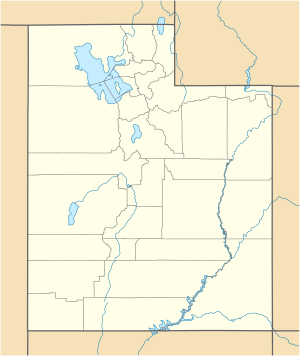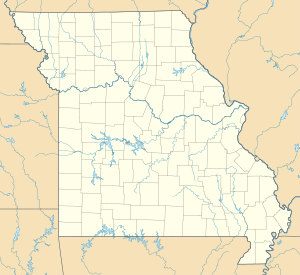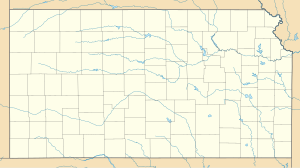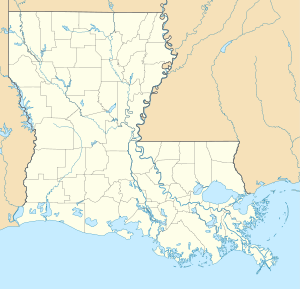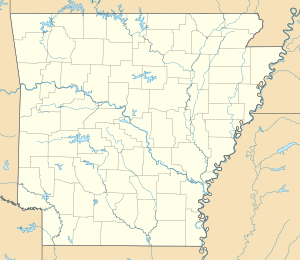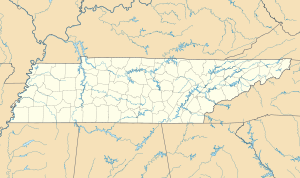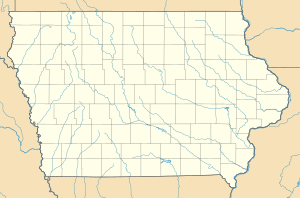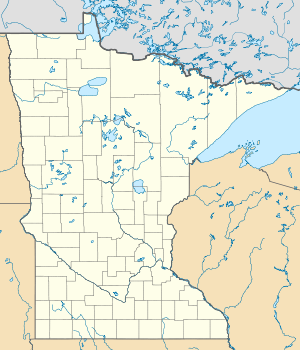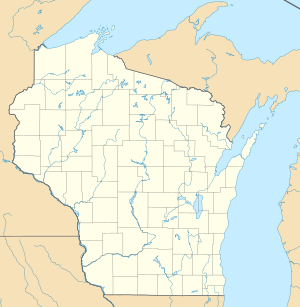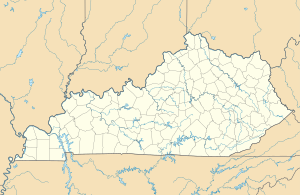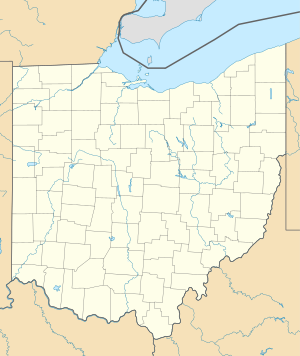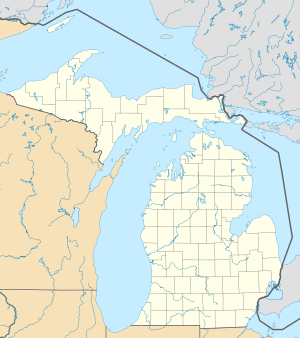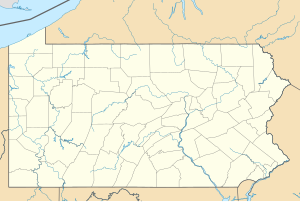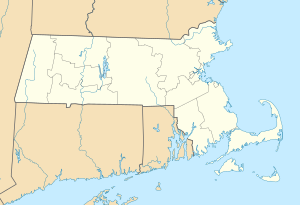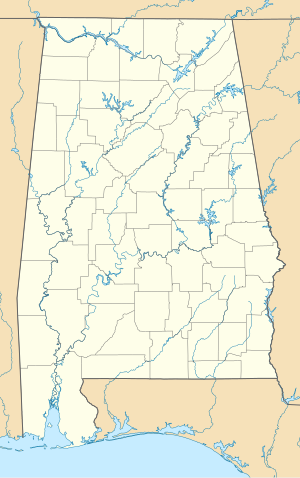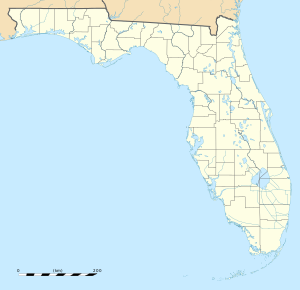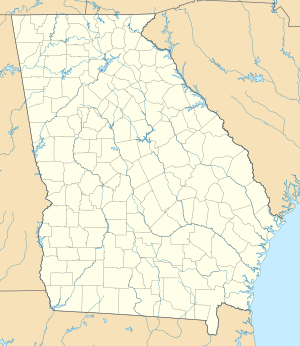1996 Summer Olympics torch relay
 | |
| Host city | Atlanta, United States |
|---|---|
| Countries visited | Greece, United States of America |
| Distance | 26,875 kilometers (16,699 mi) |
| Torch bearers | 12,467 |
| Start date | April 27, 1996 |
| End date | July 19, 1996[1] |
| Torch designer | Peter Mastrogiannis, Malcolm Grear Designers |
| Part of a series on |
| 1996 Summer Olympics |
|---|
The 1996 Summer Olympics torch relay was run from April 27, 1996, until July 19, 1996, prior to the 1996 Summer Olympics in Atlanta.[1] The route covered 26,875 kilometers (16,699 mi) across the United States and included a trek on the Pony Express, a ride on the Union Pacific Railroad, and a torch was taken into outer space for the first time. The relay involved over 12,000 torchbearers, including Muhammad Ali, who was chosen to ignite the Olympic cauldron.[2]
Organization
Planning for the torch relay began in 1993. From the beginning of the planning process, the Atlanta Committee for the Olympic Games (ACOG) worked closely with the Hellenic Olympic Committee (HOC) to organize the handover of the Olympic flame from Greece to the United States. The last such event in the United States, the 1984 Summer Olympics torch relay, had been the subject of intense controversy, as Greek organizers opposed the use of corporate sponsors for the relay and threatened not to light the flame at Olympia. Additionally, Athens had narrowly lost to Atlanta in its bid for the 1996 Olympics, which many Greek officials believed to rightfully belong to them because it marked the 100th anniversary of the first modern Olympics in Athens. Atlanta organizers sought to repair the damage that these two incidents had done to Greek–American relations by ensuring that the HOC was always included in their plans.[3] As a result of these discussions, ACOG agreed to "refrain from selling the honor of carrying the Olympic flame, to control and minimize commercialization of the flame or relay imagery, to prohibit any sponsor identification from appearing on the torch of torchbearer uniform, and to protect and acknowledge only one Olympic flame."[4]: 483
Within those constraints, the relay still relied substantially on corporate sponsorship. Most of these sponsorships were value-in-kind, with sponsors providing free products and services to the relay organizers rather than paying money to ACOG. The Coca-Cola Company was the presenting sponsor of the relay, and was the only company permitted to create relay-related merchandise and advertising. Coca-Cola was also responsible for selecting 2,500 of the torchbearers. The company gave nomination forms away as part of a promotional deal with 12-packs of their cans, with the entries largely being selected at random.[5] Revenue from the drinks sold from the travelling party were donated to charity.[6]
Transportation services, both for the flame itself and for relay organizers making preparations along the route, were provided by Delta Air Lines, Union Pacific Railroad, and BMW, with Texaco providing fuel for the motor vehicles used in the relay. Communications and technology services were provided by BellSouth, Motorola, and IBM. The torchbearer uniforms were designed and manufactured by the Sara Lee Corporation, which then owned the Hanes and Champion clothing brands. Holiday Inn provided accommodations and meeting spaces for organizers along the route.[4]: 490
The route of the torch relay was announced on July 23, 1995, in a televised special on NBC hosted by Bob Costas and ACOG president Billy Payne. It was the longest Olympic torch relay route that had been staged up to that time, covering a distance of 15,000 miles (24,000 km), visiting 42 of the 50 states, and lasting for 84 days. The length was chosen so that the Olympic flame would burn in the United States for a total of 100 days from its arrival in Los Angeles to its extinguishing at the closing ceremonies, representing the Centennial Olympics. The flame was to be carried by 10,000 torchbearers. 5,500 of these torchbearers were chosen by local affiliates of the United Way of America, with another 2,500 chosen by Coca-Cola and the remaining 2,000 selected by the U.S. Olympic Committee and ACOG.[4][7]
Torch

The torch was designed by Greek-American Peter Mastrogiannis of Malcolm Grear Designers. The Georgia Institute of Technology College of Engineering and Atlanta Gas Light turned the design into a reality.[4]: 489 It featured 22 aluminum "reeds", representing the number of times that the Games had been held. A gold-plated band towards the base of the torch features the names of all 20 host cities up to and including Atlanta, while the logo is etched into another band near the top. The handle, made of Georgia hardwood collected by the Georgia Forestry Commission and manufactured by Hillerich & Bradsby, maker of Louisville Slugger bats, is found near the center of the 76 centimeters (30 in) torch.[8][9] In total it weighed 1,600 grams (56 oz).[9] Torchbearers were allowed to purchase for $275 the torch that they had carried.[6]
During the initial leg of the torch relay in Greece, hasty modifications were made to the design of the torch. It was found that the reeds could melt while the flame was lit, requiring engineers to design a screen which could protect the reeds from the flame without affecting the performance of the torch. The propane used to fuel the torch was replaced with propylene so that it would burn brighter, requiring the thousands of torches already made to be disassembled in order to replace the fuel inside.[4]: 489
Relay
Greece
In keeping with tradition, the flame was lit at the Temple of Hera in the Greek city of Olympia on March 30, 1996. First Lady Hillary Clinton headed the American delegation at the lighting ceremony. Greek long jumper Kostas Koukodimos was the first torchbearer.[10] Over 800 people carried the torch a distance of 2,141 kilometers (1,330 mi) across Greece, the most extensive in the history of the Games, to mark the 100th anniversary of the 1896 Olympics in Athens.[9] The Greek leg of the relay culminated on April 6, when the torch arrived at Panathenaic Stadium in Athens.[11][12] The flame was carried through Athens by representatives of every country which had hosted an Olympic Games in the past century.[13]
Route in Greece
| Date | Locations[11][14] | Map | Inset map |
|---|---|---|---|
| March 30 | Olympia, Pyrgos, Kalamata | ||
| March 31 | Kalamata, Taygetus, Sparta, Tegea | ||
| April 1 | Tegea, Tripoli, Nafplio, Argos, Corinth | ||
| April 2 | Corinth, Patras | ||
| April 3 | Patras, Missolonghi, Navpaktos, Galaxidi, Itea, Amfissa, Delphi | ||
| April 4 | Delphi, Parnassus, Thebes, Vergina | ||
| April 5 | Vergina, Naousa, Pella, Thessaloniki | ||
| April 6 | Thessaloniki, Marathon, Athens (Panathenaic Stadium) |
United States

The flame then landed at Los Angeles International Airport on April 27, 1996, and was met with a welcome ceremony. The first torchbearer of the American part of the relay, Rafer Johnson, was the final torchbearer at the 1984 Summer Olympics held in Los Angeles.[15] It went on to visit 42 states and 29 state capitols along a journey of 26,875 kilometers (16,699 mi).[8][9] The torch was carried by 12,467 bearers including 2,000 former Olympians or other people somehow linked to the Olympic movement, 5,500 people who had been nominated locally as "community heroes", and 2,500 people picked out in a draw.[9][6]
The route was designed to take in as many historically and culturally significant locations as possible.[15] The torch was first carried to Santa Monica Pier and was greeted at the first of hundreds of celebratory events. It then proceeded along the coast and up to Kingman, Arizona, at which point it joined the famous Route 66, passing close to the Grand Canyon and reaching Hoover Dam. It was carried across by Martha Watson and the world's largest US flag was unfurled across the wall of the dam.[15]
The route featured a wide variety in the methods of transport used, including bicycles, boats, and trains.[8] From Las Vegas the flame was passed onto a special cauldron car on a Union Pacific train, the first of several train journeys. The National Pony Express Association participated in the journey with riders carrying the torch for over 56 continuous hours. On June 12 the torch was taken on board a replica of a 19th-century packet boat and pulled for 3.2 kilometers (2.0 mi) along the Erie Canal by mule.[15] The torch was also carried into space for the first time, with astronauts taking an unlit torch with them aboard Space Shuttle Columbia as part of STS-78.[16][17][18] This was replicated during the 2000 Summer Olympics torch relay and as part of the 2014 Winter Olympics torch relay.[19]
The relay route, as initially announced, included a stop in Yale, Oklahoma, which organizers described as the "birthplace" of Jim Thorpe. Thorpe was actually born in Pottawatomie County, Oklahoma, near the town of Prague, and about 50 miles away from Yale, where Thorpe lived briefly as an adult. Residents of Prague protested the decision and asked for the torch to be rerouted to their town. The relay organizers resisted these requests at first, saying that the route had already been carefully planned and could not be significantly altered,[20][21] but ultimately agreed to visit both Yale and Prague.[22]
While the relay went without any major mishaps there was need for a 15-mile diversion on the route between Baton Rouge and New Orleans – a 310,000 US gallons (1,200,000 L; 260,000 imp gal) gasoline spillage in Gramercy, Louisiana, necessitated the detour.[6]
Opening ceremony

The end of the relay took place on July 19, 1996, at the opening ceremony in Atlanta. Four-time gold medal-winning discus thrower Al Oerter carried the torch to the stadium, passing it to Evander Holyfield. Holyfield was then joined by Voula Patoulidou and the pair passed the flame to American swimmer Janet Evans, the penultimate torchbearer, who carried it around a lap of the track and up a long ramp leading towards the northern end of the stadium.[23][24]
The identity of the final torchbearer had been kept secret and was only revealed when Muhammad Ali appeared at the top of the ramp. Ali, who had won gold at the 1960 Games in Rome and later developed Parkinson's disease, lit a mechanical torch which then travelled along a wire, lighting the cauldron at the top of a 116-foot (35 m) tower.[23][24] His appearance has been referred to as being one of the most inspiring, poignant, and emotional moments in Olympic history.[23][25][26]
Route in the United States
References
- ^ a b Longman, Jere (9 December 1995). "OLYMPICS;Torch Run Takes a Wrong Turn". The New York Times. Retrieved 7 May 2012.
- ^ "Muhammad Ali Lights the Olympic Cauldron". International Olympic Committee. 2017-02-06. Retrieved 2018-03-09.
- ^ MacAloon, John J. "This flame, our eyes: Greek/American/IOC relations, 1984–2002, an ethnographic memoir", Bearing Light: Flame Relays and the Struggle for the Olympic Movement, Routledge, 2013.
- ^ a b c d e "The Official Report of the Centennial Olympic Games Volume I" (PDF). The Atlanta Committee for the Olympic Games. Retrieved April 15, 2024.
- ^ Hong, Peter Y. (January 31, 1996). "Teacher to Carry Olympic Torch : Compton educator, nominated by one of her eighth-grade students, is first in Southland to be chosen for the honor". LA Times. Retrieved October 12, 2013.
- ^ a b c d Johnson, Dirk (May 26, 1996). "15,000-Mile Olympic Torch Route Gives Lots of People Reasons to FeelGood". The New York Times. Retrieved October 7, 2013.
- ^ Pousner, Howard. "Torch's trip to Atlanta a 42-state extravaganza", Atlanta Journal-Constitution, July 24, 1995, page C4.
- ^ a b c "1996 Olympic Torch Relay At a Glance". Washington Post. Retrieved October 7, 2013.
- ^ a b c d e "Olympic Games Atlanta 1996". Olympic-Museum.de. Archived from the original on October 23, 2013. Retrieved October 7, 2013.
- ^ Cheakalos, Christina. "Sacred ceremony sparks flame's trip", Atlanta Journal-Constitution, March 31, 1996, page B12.
- ^ a b Wilson, Rusty. "An Olympic Fairy Tale: The 1996 Olympic Flame Relay in Greece", Journal of Olympic History 6.1, Winter 1998, pages 10-13.
- ^ Cheakalos, Christina. "Centennial glory: Competition reveals Greek pride, anger", Atlanta Journal-Constitution, April 7, 1996, page H1.
- ^ "Torch for Tewksbury", Montreal Gazette, April 4, 1996, page C1.
- ^ Cheakalos, Christina. "Greek legends, history inspire torchbearers", Atlanta Journal-Constitution, April 4, 1996, page B4.
- ^ a b c d "The Official Report of the Centennial Olympic Games Volume II" (PDF). The Atlanta Committee for the Olympic Games. pp. 14–53. Retrieved October 7, 2013.
- ^ Pearlman, Robert Z. (April 23, 2013). "Cosmonauts May Carry Olympic Torch and 'Flame' on Spacewalk". Space.com. Retrieved October 8, 2013.
- ^ "NASA Johnson Space Center Oral History Project". NASA. Retrieved October 8, 2013.
- ^ "STS-78 crew holds up Olympic torch at SLF". V Like Vintage. Archived from the original on October 8, 2013. Retrieved October 8, 2013.
- ^ "Olympic Torch makes journey to International Space Station". Olympic News. 7 November 2013. Retrieved 15 November 2020.
- ^ Hutchison, Mark A. "Route Inflames Thorpe Fans; Torch Panel Unmoved", The Oklahoman, November 13, 1995, front page and page 2.
- ^ Kindred, Dave. "Dishonoring Jim Thorpe", Atlanta Journal-Constitution, December 1, 1995, page C4.
- ^ "Torch Run Sites Announced; Olympic Committee Adds Prague, OK, to List", Associated Press, via The Oklahoman, March 1, 1996, Web.
- ^ a b c "The Official Report of the Centennial Olympic Games Volume II" (PDF). The Atlanta Committee for the Olympic Games. pp. 68–69, 132. Retrieved October 7, 2013.
- ^ a b Weinberg, Rick. "8: Ali lights the flame at the 1996 Olympics". ESPN. Retrieved October 8, 2013.
- ^ Thornburgh, Tristan (July 19, 2013). "On Today's Date: Muhammad Ali Lights the Torch at the 1996 Olympics". Bleacher Report. Retrieved October 7, 2013.
- ^ Luckhurst, Samuel (May 31, 2012). "London 2012 Olympics Countdown: Muhammad Ali Prompts Tears At Atlanta 1996". Huffington Post. Retrieved October 8, 2013.


